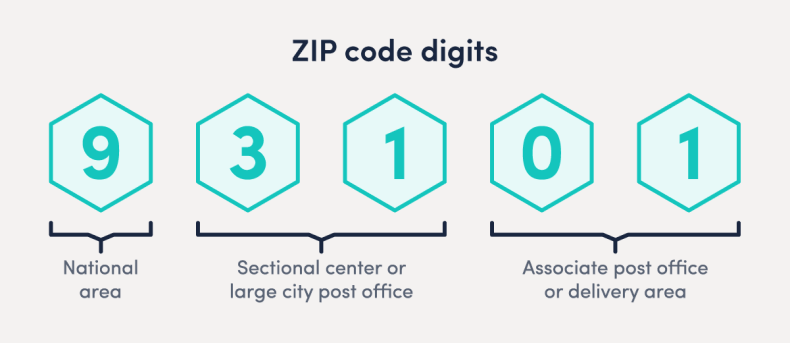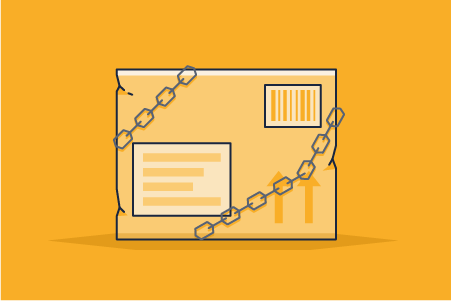What Is A ZIP Code?

ZIP Code Overview
The Importance Of ZIP Codes
ZIP code data plays a crucial role in various aspects of American business operations. From accurately sending out mail to effectively rooting out fraud, having access to accurate ZIP code information is essential. ZIP codes even serve important marketing functions for businesses, with uses such as researching demographic information and analyzing market trends, in turn enabling targeted marketing strategy for specific geographies. In essence, ZIP code data serves as a foundational element for businesses to streamline operations, reduce errors, and optimize their overall performance in the competitive American market.
This article aims to provide a deeper understanding of the significance of these numbers so that you can utilize them effectively in your business.
The US ZIP Code System (USPS)
The role of the American ZIP code is to process data with expediency and efficiency. Errors in ZIP codes may result in processing delays. For an in-depth understanding of the ZIP code, the United States Postal Service is the definitive resource. This comprehensive FAQ resource will be helpful. What you’ll notice is that every digit within a ZIP code conveys meaning as part of a methodical plan.
What's the difference between ZIP & ZIP+4 codes?
As we've already mentioned, ZIP codes are essential to successful mail delivery. ZIP+4 codes, though, provide another level of accuracy. While standard five-digit code helps pinpoint specific regions, the additional four digits within the ZIP+4 code provides still greater precision by narrowing down, even to a particular geographic segment within a delivery area. Every digit in a ZIP code conveys crucial information, from indicating the group of states to pinpointing a specific city or region - with the final four digits generally providing the most specific details of an address.
While only the first five digits are necessary for sending mail, including the full ZIP+4 code can significantly speed up delivery times thanks to the detailed geographic information it offers. This system ensures that mail reaches its destination accurately and swiftly, benefiting both senders and recipients across the country.
ZIP codes are translated into barcodes that enable the automatic sorting of mail, which reduces the amount of human oversight necessary.
What do ZIP code digits mean?

Zip code digits provide information about a specific geographic area. The first digit of a zip code represents a group of U.S. states, and the next two digits narrow down the area to a specific region within that group of states. The last two digits further pinpoint the exact location within that region. This system helps with sorting and delivering mail efficiently to the correct location.
How to read a ZIP code
When reading a zip code, it is crucial to pronounce each digit individually to ensure accuracy. For instance, the zip code "90210" should be vocalized as "nine zero two one zero.", not "ninety thousand, two hundred and ten". It is also important to include any additional numbers or letters that make up the extended zip code. This precision is vital when sending mail to guarantee it reaches its intended recipient without any errors.
History Of The ZIP Code
The ZIP code came into existence during a time of economic prosperity in the United States. It evolved out of necessity due to a rapid swell in the population, as well as a boom in commerce following the first and second World War eras. During this time, old systems for delivering mail had begun breaking down due to a need for information to travel across the United States continent, faster.
In response, Robert Moon, who spent his career with the United States Postal Service (USPS), invented a new system that became formally implemented in 1963 after a 20-year development process. This system relied on a defined numerical system rather than a less structured recall of familiar cities, counties, and states. This shift, from a more casual and personal way of managing mail to one with more definition and order, incited controversy and a 20-year conflict. When Moon passed away in 2001, he was credited with the establishment of the first three digits in the ZIP code.
By 1967, all mail delivered in the United States had ZIP codes. At this point in history, the United States Postal Service was responsible for moving 80 billion pieces of mail compared to 30 billion during the Great Depression. Meanwhile, there was a new world of transportation evolving through trucks and airplanes, which were capable of moving goods more efficiently than railroad based systems.
As the years passed, ZIP codes began to take on more function in American society. For instance, the United States Census uses ZIP codes to organize demographic information that includes, but is not limited to, educational attainment, household income, household size, and other population health characteristics. Financial entities such as banks, insurance providers, and credit card companies use ZIP codes to calculate rates. Zip codes are also used in online shopping use cases, with regards to fraud detection and prevention.
ZIP codes are a pillar for understanding the demographic characteristics of and doing business within the United States.<

ZIP Codes In Global Perspective
The United States is a member country to the Universal Postal Union (UPU). The postal code standards developed and maintained by the United States are integral to the UPU’s mission to facilitate the free exchange of global mail.
The United Nations Regulatory Body
The UPU, a United Nations regulatory body, relies on member countries such as the U.S. for funding, insights, and scientific leadership. In recent years, the UPU has utilized Geographic Information Systems (GIS) technology from the United States to build new postal systems in developing nations, from the ground up. The UPU also provides moderation for disputes in a complex global trade environment.
The United States, with its ZIP code system and expertise, is one of the top funding members of the UPU. For this reason, it is important to technologists working with ZIP code data to understand that postal code systems have far-reaching geopolitical significance as problem-solving tools.
Postal Codes In Canada (Canada Post)
Postal codes in Canada and the United States are two separate systems. For one, ZIP codes are specific to the United States only and are managed by the USPS. In Canada, the postal code system is governed by Canada Post, which is the country’s mail service.
As with the United States, Canada maintains one of the most well-defined postal code systems in the world. This system evolved in the 1950s and 1960s, alongside a population boom in the country. The first postal code was a three-digit system that evolved into a six-digit system in 1969.
The first three digits are known as a forward sortation area (FSA), which correspond to a geographic region such as a province or territory. The second set of three digits corresponds to a local delivery unit (LDU), which describes a group of addresses.
Postal codes in Canada have taken on a similar function to ZIP codes in the United States with regards to mail sorting, automation, and the management of demographic data.
Loqate helps businesses around the world verify customer addresses by combining our global datasets with best in class technology. Our easy to integrate API helps our customers verify US address data, be they ZIP or ZIP+4 codes, at the point of capture. Find out more about how Loqate address verification solutions can help your business.


